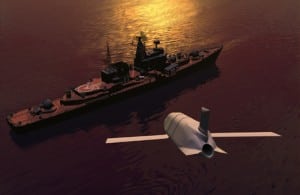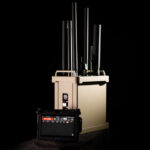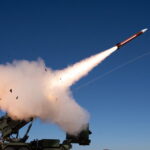
 Periodically, Virtual Analyst provides detailed updates on the status of defense programs, both programmatically and in Congress. Today, we take a look at selected Pentagon missile/munition programs.
Periodically, Virtual Analyst provides detailed updates on the status of defense programs, both programmatically and in Congress. Today, we take a look at selected Pentagon missile/munition programs.
JASSM — The JASSM program is in full swing in terms of production and integration for the Pentagon as well as for the Australian Air Force. The extended range version of the weapon, known as JASSM-ER, is also well-established, completing its end operational test in October 2012, and the Governmental Accountability Office (GAO) reviewed the program in January 2014. The first JASSM-ER missiles were delivered in April 2014, and a full-rate production decision was scheduled for June 2014. JASSM-ER has encountered several production issues that have resulted in delays for the full-rate production decision, which will likely cause a delay in the deliveries for initial availability. Today, the only platform able to support JASSM-ER is the B-1 — however, the Air Force expects to integrate it onto the B-52, F-15E, and F-16 platforms.
Countries currently interested in acquiring JASSM and JASSM-ER include Australia, Finland, and Poland. Australia and Finland have begun integrating JASSM to their platforms. Australia reported that JASSM was completely integrated in May 2014. Poland has also expressed interest in acquiring the JASSM systems, and just recently received authorization from the Pentagon to do so. South Korea attempted to obtain JASSM systems, but were denied sale for undisclosed reasons. Potential international customers include Sweden, who are seeking to upgrade their current missile systems.
All four defense committees have signed off on the Pentagon’s plans to buy 224 missiles this year, with expectations of buying 360 per year through the rest of the Future Years Defense Plan (FYDP).
LRASM — Early trials for the Long-Range Anti-Ship Missile (LRASM) wrapped up in March 2014, and as a result of these trials, the Defense Advanced Research Projects Agency (DARPA) awarded the contract for accelerated acquisition to Lockheed Martin in July 2014. Lockheed Martin was awarded the contract as sole-source, cost-plus-incentive-fee contract with a total amount not to exceed $200 million, and with an obligated $33 million. LRASM is a derivation of the Air Force AGM-158 JASSM-ER missile. A protest was submitted to the GAO in June 2014 by Raytheon and Kongsberg, but GAO denied the protest.
DARPA and the Office of Naval Research (ONR) completed tests in 2013 and 2014. Serial production of the LRASM is scheduled to begin in 2015. LRASM is set to have a variant that is similar to the JASSM that could be launched from the Mark 41 Vertical Launch System. Currently, there are no other nations attempting to acquire LRASM.
The program faces some obstacles in Congress. The Senate’s version of the defense authorization bill zeroes out the $203 million requested in this year’s budget for LRASM research and development, noting that lawmakers want to halt the program “pending analysis demonstrating need.” Their House counterparts did not make alterations, however, nor did Senate appropriators. House appropriators didn’t zero out the buy, but did slash $41 million for cost growth in the program.
JSOW — The current version of the Joint Standoff Weapon, JSOW A-1, has been developed and sold to Australia, Canada, Greece, Poland, Singapore, Turkey, and the Netherlands. Countries who have ordered the JSOW include Saudi Arabia, United Arab Emirates, and Finland.
The Pentagon is currently making modifications to JSOW to enhance the video link and heat-sensing capabilities, as well as increase the weapon’s overall range. A new extended range version, JSOW-ER, would increase the original range of the JSOW by more than 250 nautical miles, and tests were completed in June 2014. Internationally, JSOW-ER faces stiff competition from the Joint Strike Missile, which is produced by Norwegian company Kongsberg.
The Pentagon has been developing JSOW-C, a variant that would enable the weapon to better strike hardened targets. The Navy underwent a successful test in May 2014, and the Royal Australian Air Force tested it successfully three months later.
The JSOW program faces an uncertain future, however. Just a year ago, the Pentagon had planned to buy north of 400 missiles a year through the FYDP. That changed this year, when the Pentagon suddenly cut the buy to just 200 missiles in fiscal 2015 and 2016, and then zeroed out the program after that. Congress has signed off on the move so far. The program could simply be on hiatus due to the current budget environment, as the Pentagon’s budget justification sheet accompany the fiscal 2015 budget indicated an intent to procure an additional 4,000 missiles over the life of the program.
SDB II — The Small Diameter Bomb Increment II was expected to enter low-rate initial production in August 2014, a seven-month delay from earlier estimates due to two failures in the flight test program in early 2013. To stay on its current production schedule, SDB II must complete seven successful flight tests over a five-month period, as any further failures with the system will further delay the program. A GAO report earlier this year also noted that “future sequestration funding cuts may result in reduced production quantities or the inability to exercise contract options.”
The SDB II completed three guided test vehicle flights in September 2014. It is also scheduled for a live-fire demonstration, which is scheduled for completion in late September or October 2014. Currently, the weapon is not being shopped on the international market.
The SDB program enjoyed support from all four defense committees in its bid to purchase 246 bombs in fiscal 2015, although Senate authorizers cut $52.5 million from the program due to a delay in the Milestone C decision. House and Senate appropriators both cut funding from the program as well due to delays in the program.
Analysis by Jordan Gengler













